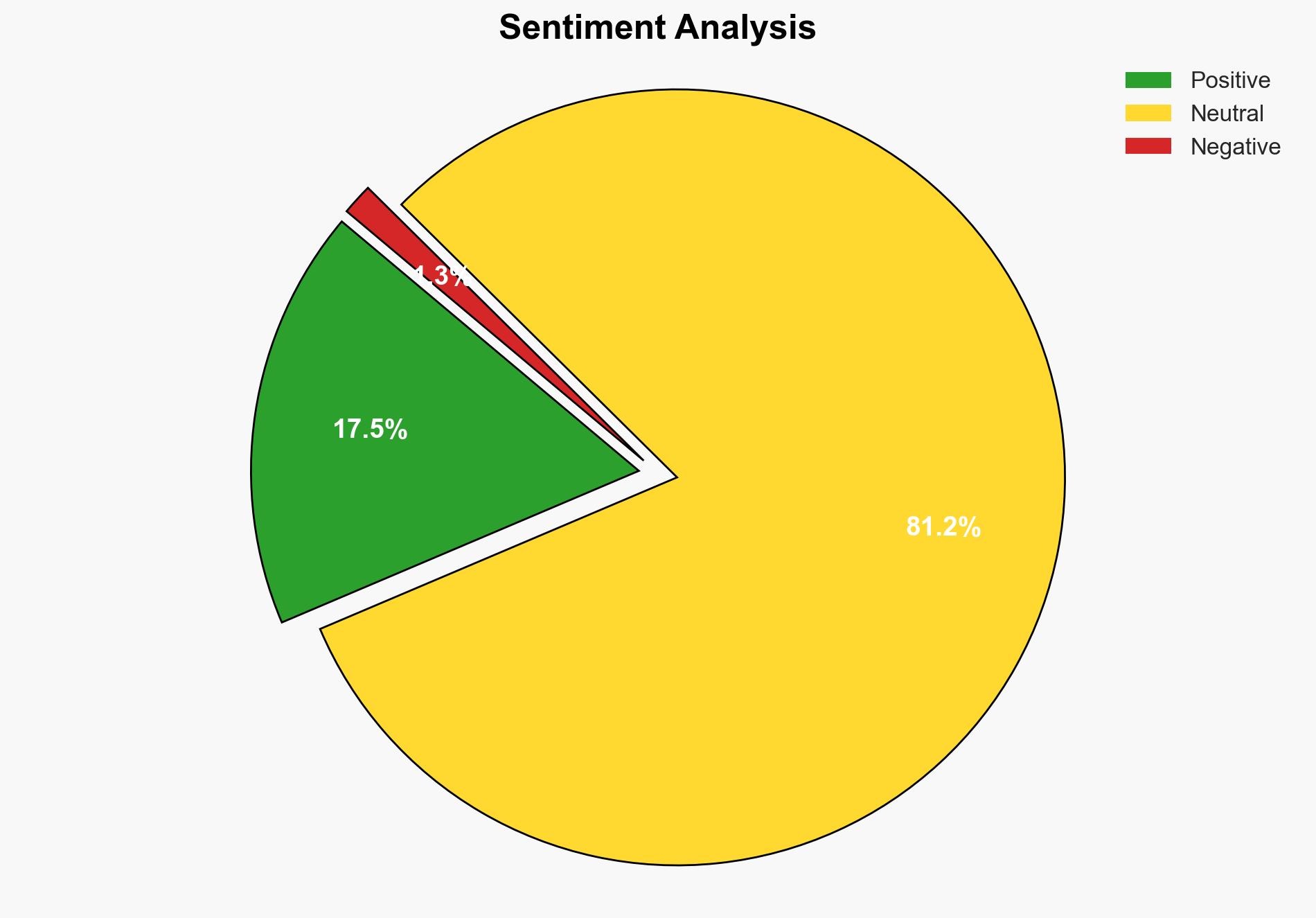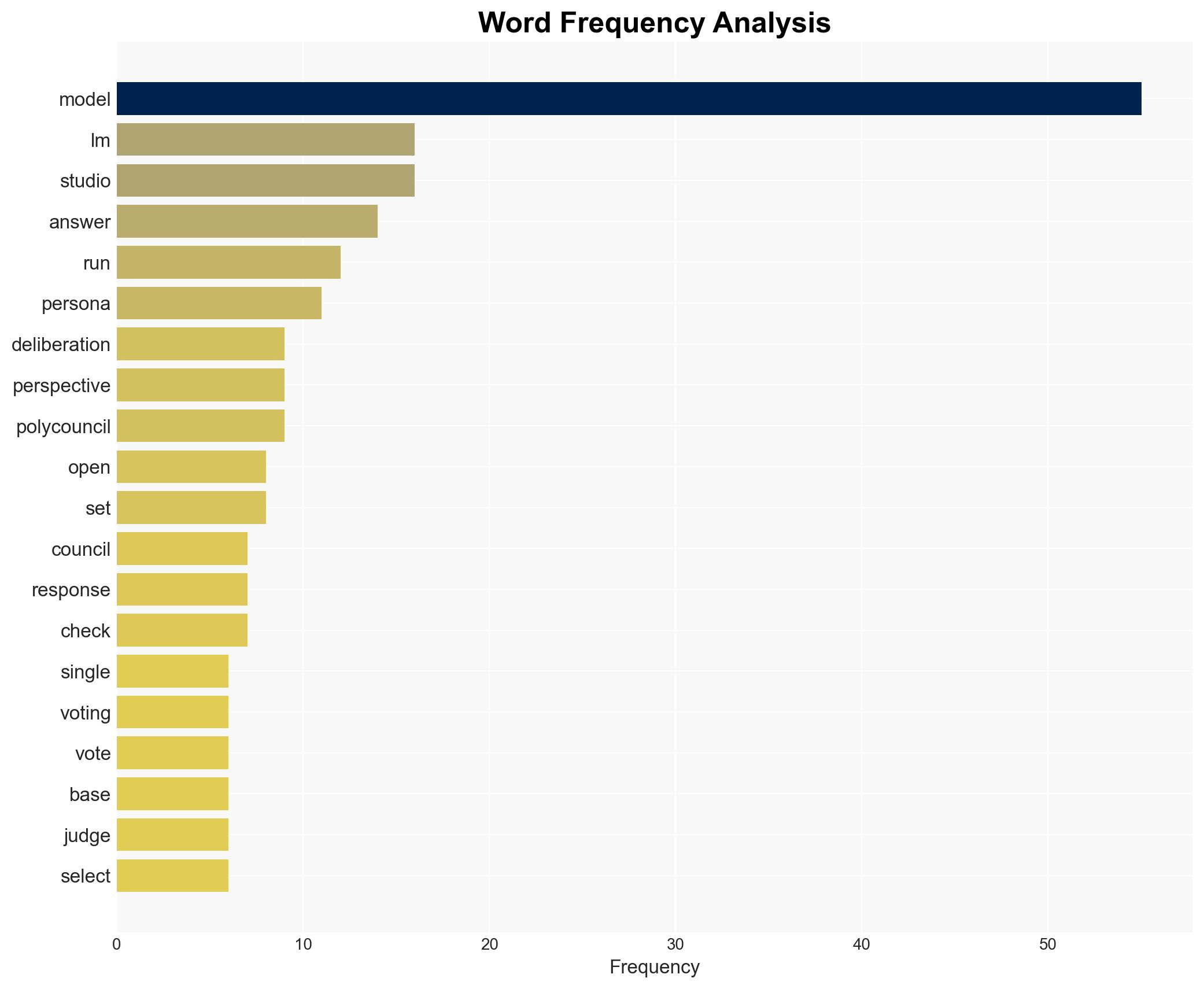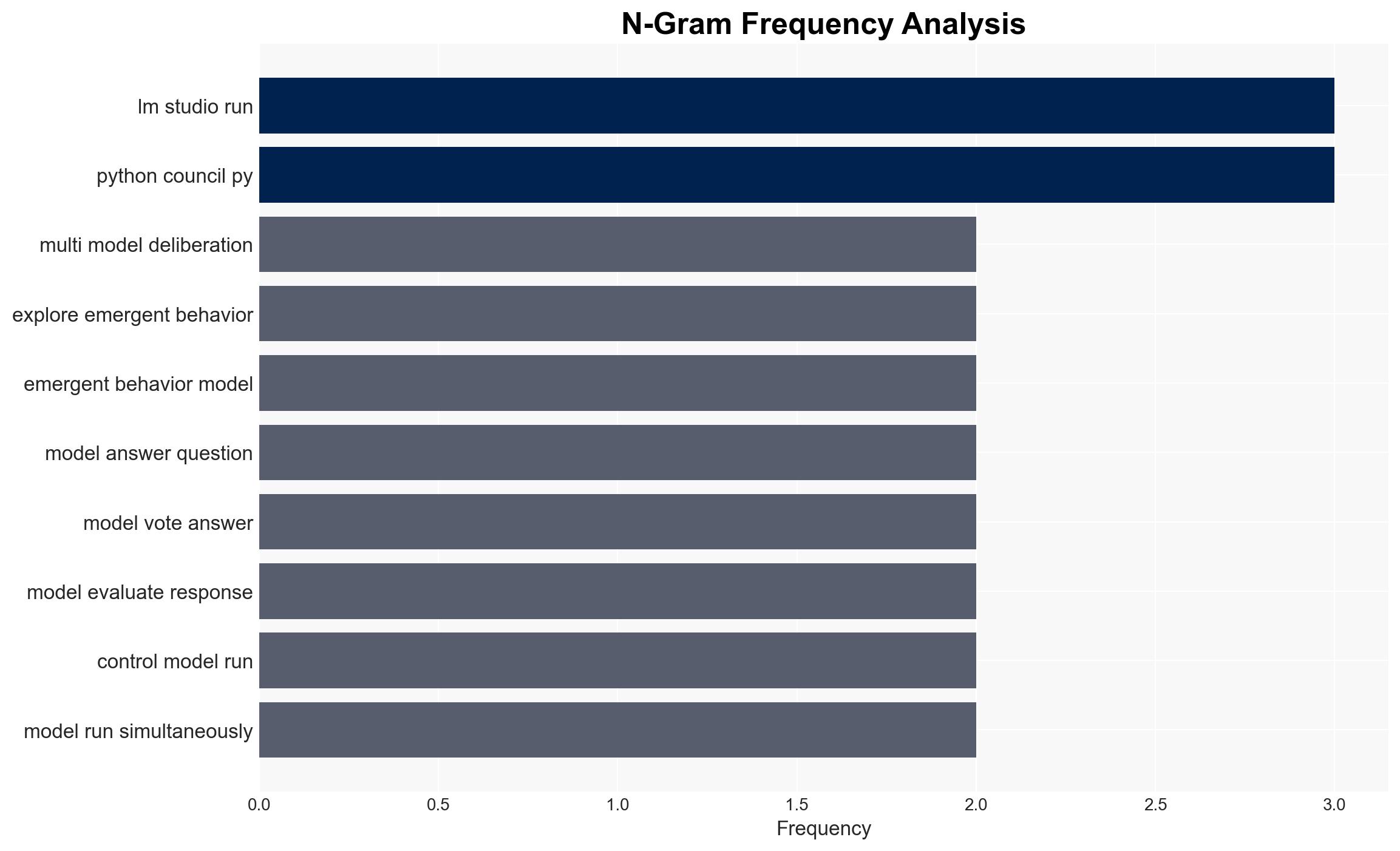Show HN PolyCouncil Multi-Model Deliberation Engine for LMStudio Open Source – Github.com
Published on: 2025-11-13
AI-powered OSINT brief from verified open sources. Automated NLP signal extraction with human verification. See our Methodology and Why WorldWideWatchers.
Intelligence Report: Show HN PolyCouncil Multi-Model Deliberation Engine for LMStudio Open Source – Github.com
1. BLUF (Bottom Line Up Front)
The PolyCouncil Multi-Model Deliberation Engine represents a significant advancement in orchestrating multiple large language models (LLMs) for enhanced decision-making and research capabilities. With a moderate confidence level, the most supported hypothesis is that this tool will improve the quality and reliability of AI-generated responses through ensemble methods and democratic deliberation. Strategic action should focus on monitoring its adoption and potential impacts on AI research and application fields.
2. Competing Hypotheses
Hypothesis 1: The PolyCouncil engine will enhance AI decision-making by leveraging multiple LLMs to produce more accurate and reliable outputs through consensus-driven processes.
Hypothesis 2: The complexity and resource demands of running multiple LLMs in parallel will limit the practical adoption of the PolyCouncil engine, resulting in minimal impact on AI research and applications.
Hypothesis 1 is more likely due to the structured approach of using ensemble methods and customizable scoring rubrics, which can systematically improve response quality. However, Hypothesis 2 cannot be dismissed due to potential technical and resource constraints.
3. Key Assumptions and Red Flags
Assumptions include the belief that users have the necessary computational resources to run multiple LLMs and that the scoring rubrics are effectively designed to capture quality. Red flags include potential over-reliance on automated consensus mechanisms and the risk of bias in predefined personas. Deception indicators are minimal, but the open-source nature requires vigilance against potential misuse or manipulation of the tool.
4. Implications and Strategic Risks
The successful implementation of this engine could democratize AI decision-making, reducing biases inherent in single-model outputs. However, it also poses risks such as increased computational demands and potential vulnerabilities in cybersecurity if not properly managed. The tool’s open-source nature could lead to rapid innovation but also exposes it to potential exploitation.
5. Recommendations and Outlook
- Encourage collaboration with academic and industry partners to refine scoring rubrics and personas to mitigate bias risks.
- Monitor the adoption rate and gather feedback to assess the tool’s impact on AI research and applications.
- Best-case scenario: The engine becomes a standard tool for AI research, improving decision-making accuracy. Worst-case scenario: Limited adoption due to resource constraints. Most-likely scenario: Moderate adoption with incremental improvements in AI output quality.
6. Key Individuals and Entities
No specific individuals are mentioned in the source text. The primary entity involved is the PolyCouncil development team, which operates within the open-source community.
7. Thematic Tags
Cybersecurity, Artificial Intelligence, Open Source, Decision-Making, Ensemble Methods
Structured Analytic Techniques Applied
- Adversarial Threat Simulation: Model and simulate actions of cyber adversaries to anticipate vulnerabilities and improve resilience.
- Indicators Development: Detect and monitor behavioral or technical anomalies across systems for early threat detection.
- Bayesian Scenario Modeling: Quantify uncertainty and predict cyberattack pathways using probabilistic inference.
- Cognitive Bias Stress Test: Structured challenge to expose and correct biases.
Explore more:
Cybersecurity Briefs ·
Daily Summary ·
Methodology





